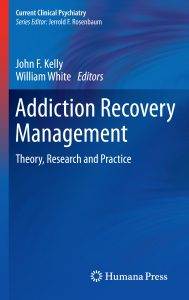
In 1998, I had the privilege of co-leading the Behavioral Health Recovery Management Project—an effort funded by the State of Illinois to: 1) evaluate the current state of addiction treatment, and 2) offer recommendations for elevating the quality of such treatment. My colleagues and I drew the following conclusions from that early work:
Despite seemingly different approaches and related debates about the most effective treatment of substance use disorders, nearly all treatment is being delivered within an acute care (AC) framework, meaning that it transpires over ever-briefer periods of time at ever-increas9ing costs.
The limitations of AC models of addiction treatment included:
*the inability to voluntarily attract people experiencing alcohol and other drug problems at early stages of problem development,
*high rates of disengagement prior to treatment completion,
*low rates of participation in post-treatment continuing care,
*minimal attention to the ecology of addiction and recovery (e.g., the influence of family and social environment on recovery outcomes), and
*high rates of post-treatment addiction recurrence and related treatment readmissions.
In short, we suggested that addiction was being treated like a broken arm or bacterial infection rather than as a condition like diabetes, asthma or heart disease that responded best to long-term personal, peer, and professional recovery management. The need to shift perspectives on the treatment of addiction gained impetus in the wake of a landmark article published in 2000 by Dr. Tom McLellan and colleagues in the Journal of the American Medical Association.
The alternative to AC models of addiction treatment is a model of sustained recovery management nested within larger recovery-oriented systems of care. Recovery management (RM) is a philosophical framework for organizing addiction treatment services to provide pre-recovery identification and engagement, recovery initiation and stabilization, long-term recovery maintenance, and quality-of-life enhancement for individuals and families affected by severe substance use disorders. Recovery-oriented systems of care (ROSC) are networks of formal and informal services developed and mobilized to sustain long-term recovery for individuals and families impacted by severe substance use disorders. The “system” in ROSC is not a local, state, or federal treatment agency but a macro-level organization of a community, a state, or a nation. ROSC initiatives provide the physical, psychological, cultural, and social space within local communities in which personal and family recovery can flourish.
My colleagues and I detailed the distinctions between AC and RM/ROSC models of recovery support and the scientific evidence supporting the latter in a long series of monographs, books, articles, and blogs published over two decades. RM/ROSC models were first piloted in the State of Connecticut under the leadership of Dr. Thomas Kirk, the City of Philadelphia under the leadership of Dr. Arthur Evans, Jr. and Roland Lamb, and later promoted nationally by the Center for Substance Abuse Treatment (CSAT, see Dr. Westley Clark interview).
As interest in RM/ROSC increased, state and local communities sought information of how to initiate and sustain recovery-focused system transformation efforts that would shift their orientation from AC models of intervention to RM/ROSC models of sustained recovery support. The Hancock County ADAMHS Board (Hancock County, Ohio) has just published an evaluation report of their RM and ROSC efforts over the past nine years. This report is a rigorous evaluation of a local ROSC transformation process that involved strong local leadership, the involvement of multiple stakeholders (including local recovery communities), and the utilization of national consultants with expertise in ROSC systems transformation efforts. I encourage anyone involved in or interested in such efforts to review the report at the following link:
Hancock County Ohio ROSC Evaluation Report 2022